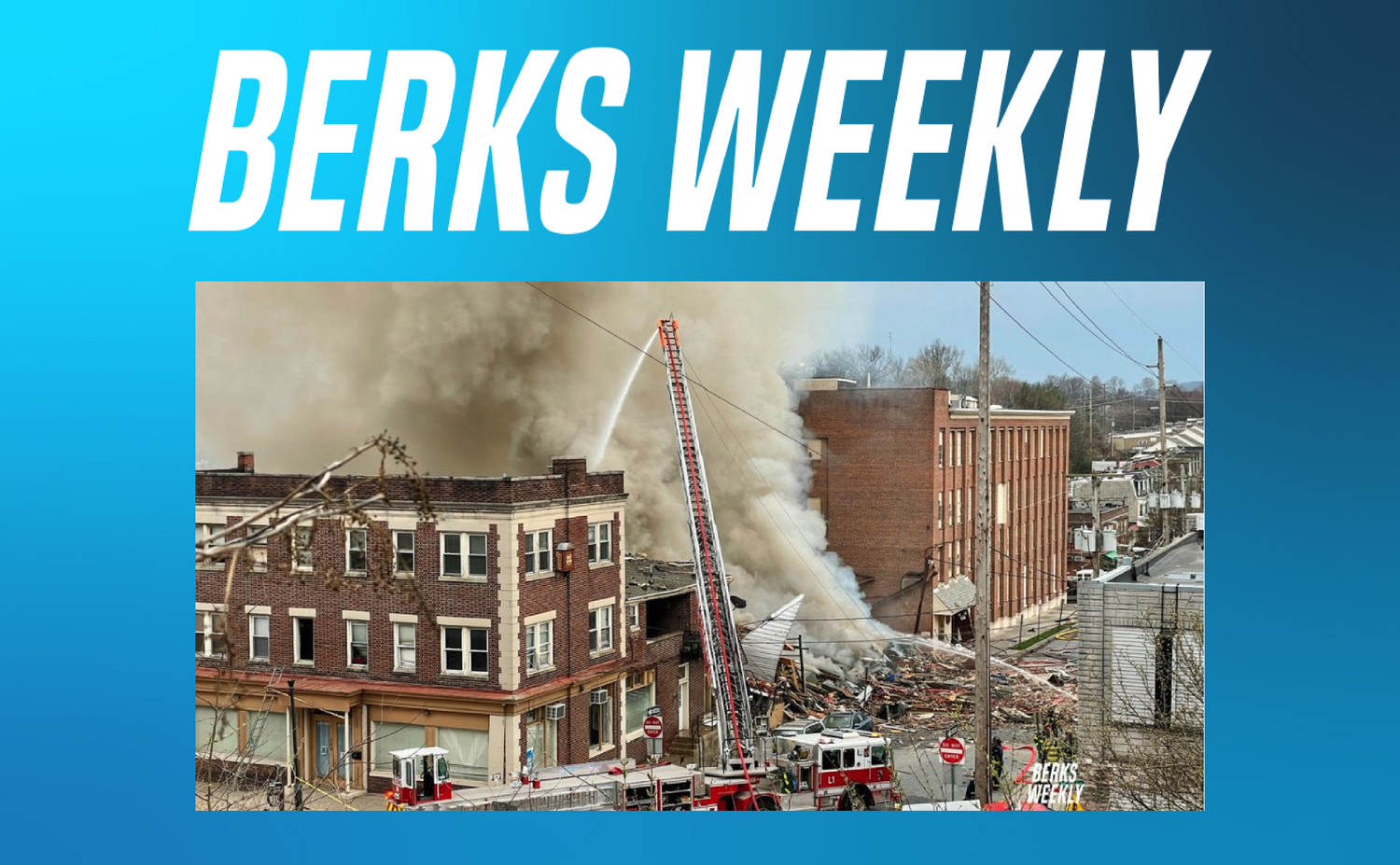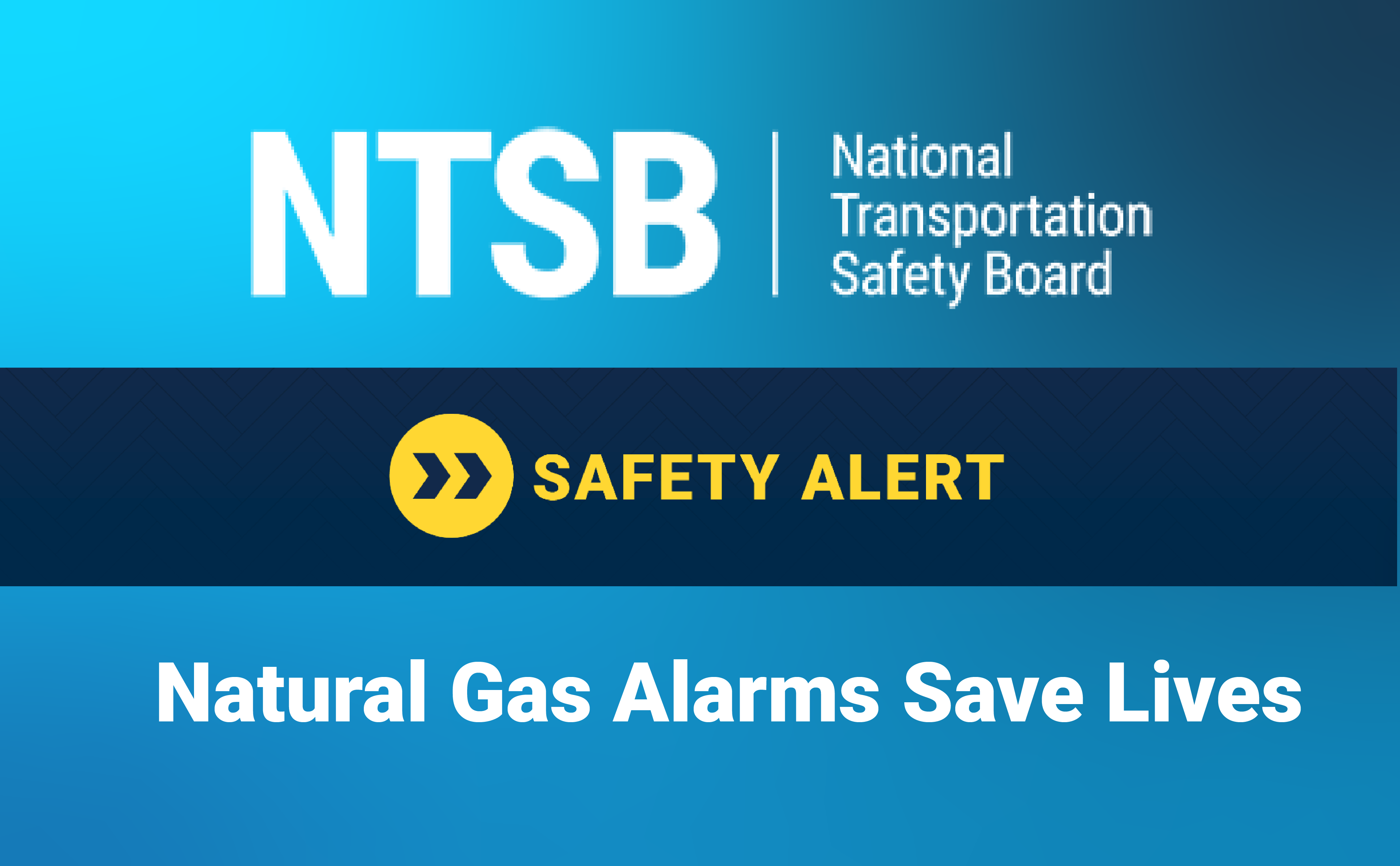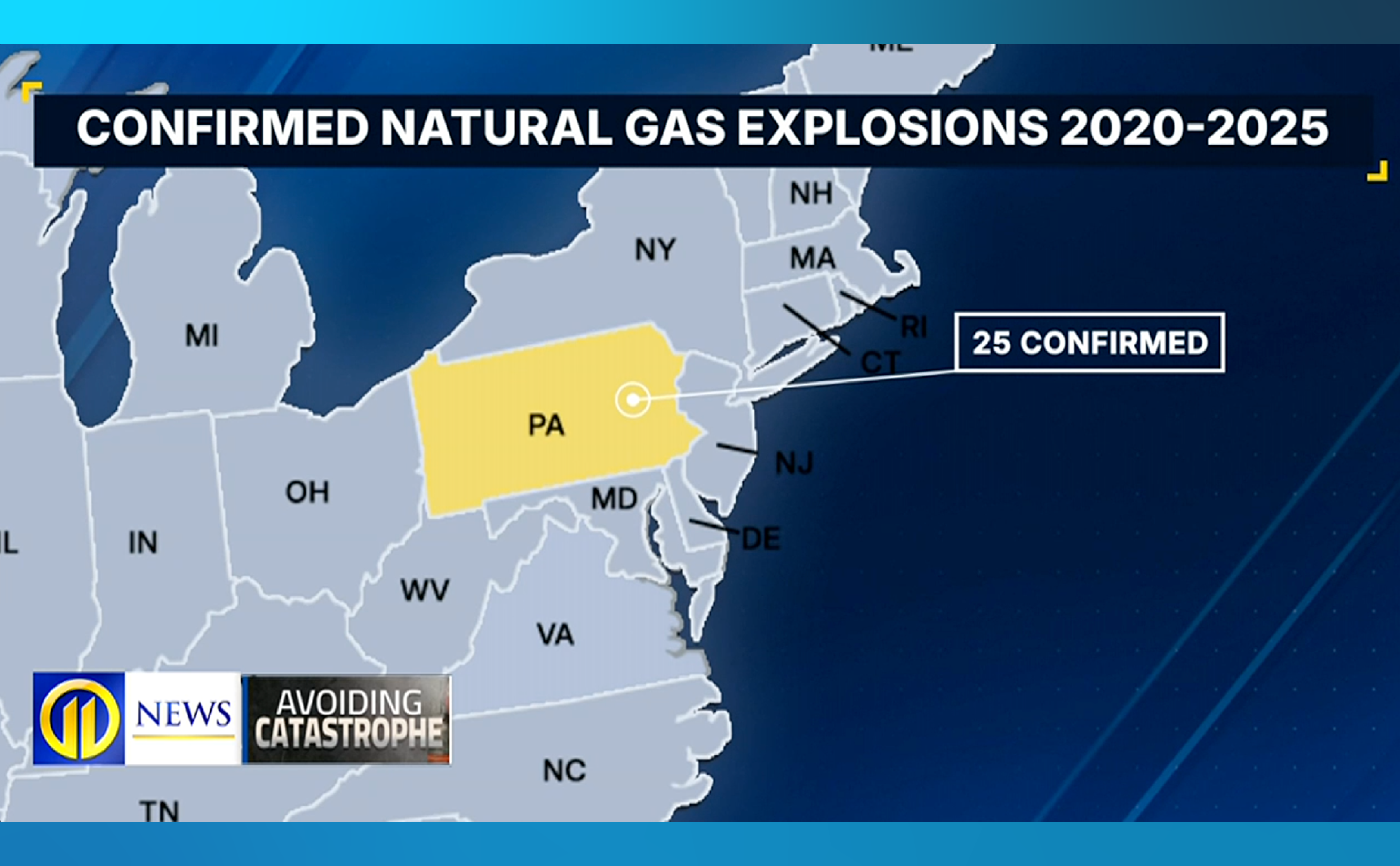Originally posted on Berks Weekly
Federal investigators have concluded that a deadly 2023 explosion at the R.M. Palmer Company candy factory in West Reading was caused by a degraded underground natural gas fitting that leaked gas into the facility, which later ignited—killing seven employees and injuring 10 others.
The 110-page report, released by the National Transportation Safety Board (NTSB), determined that the explosion was fueled by natural gas leaking from a retired Aldyl A polyethylene service tee installed in 1982, which was still connected to the UGI gas distribution system. The gas migrated underground and entered the factory basement, where it exploded on March 24, 2023.
High ground temperatures from a cracked steam pipe, owned by R.M. Palmer, contributed to the plastic fitting’s degradation. The steam pipe had not been marked or maintained, and investigators found that Palmer had no records of inspections for the line running beneath Cherry Street, which separates the company’s two buildings.

“This tragic incident was the result of overlooked infrastructure hazards and a lack of coordinated emergency preparedness,” the report stated.
Multiple Failures Contributed
The NTSB identified a number of contributing factors:
UGI’s lack of awareness of the nearby steam pipe led to an incomplete risk assessment during a 2021 replacement of the gas service line. Although UGI replaced the active line and installed a new connection, the older tee remained pressurized and ultimately failed.
R.M. Palmer’s emergency response protocols were lacking. Employees had reported a gas smell more than 30 minutes before the blast, but the buildings were not evacuated. Several employees remained at their workstations, believing they needed permission to leave.
Delays in gas shutoff hindered firefighting efforts. UGI struggled to locate and access key underground valves, some of which were paved over or mislabeled, delaying full gas isolation for nearly an hour.

Surveillance footage and interviews showed that supervisors were inspecting the gas meter shortly before the explosion occurred. One employee described the smell as so strong it caused eye irritation, prompting him to leave the building—one of the few to do so before the explosion.
Reported Damages and Casualties
The explosion destroyed Building 2 and caused major structural damage to Building 1 and an adjacent apartment building. Three families were displaced. The total estimated property damage was $42 million.
Recommendations and Response
In light of its findings, the NTSB issued a sweeping list of safety recommendations directed at:
UGI Corporation, urging a full inventory of its plastic natural gas components and better detection of temperature-related risks.
R.M. Palmer Company, to establish clear gas emergency evacuation procedures and training.
Federal and state agencies, including the Pipeline and Hazardous Materials Safety Administration and OSHA, to require improvements in pipeline integrity management, emergency response, and installation of natural gas alarms in commercial buildings.
The report also called for legislative changes, including modifications to Pennsylvania’s One Call system to require registration of steam and high-temperature pipelines in public rights-of-way—such as the steam line implicated in this explosion.
The Pennsylvania Public Utility Commission was also criticized for refusing to share investigative records with the NTSB during the probe.
The final determination listed the probable cause as degradation of the retired service tee due to elevated ground temperatures from Palmer’s corroded steam pipe. The severity of the incident was worsened by both companies’ shortcomings in emergency readiness and communication.
Read the full NTSB report here.
Statement from R.M. Palmer
“We are currently reviewing the NTSB’s report. Not a day goes by that we do not remember and reflect on the heartbreaking loss of several colleagues and friends on that tragic day. We continue to mourn this loss, and our thoughts and prayers are with the families affected by this tragedy.
R.M. Palmer takes the health, safety and wellness of our employees very seriously and will continue to work tirelessly to ensure the health and safety of our employees and will proactively work with regulators to prevent any similar tragedy in the future.”
PUC responds, highlights ongoing pipeline safety efforts
In response to the NTSB’s final report, the Pennsylvania Public Utility Commission (PUC) emphasized its continued commitment to pipeline safety and collaboration with federal agencies. In a statement released Tuesday, PUC Chairman Stephen M. DeFrank said the Commission remains focused on reducing risk through measures such as accelerated pipe replacement, improved leak detection, and enhanced emergency communication protocols.
“The most meaningful way we can honor those lost in West Reading – and in other tragic incidents – is by building a safer future,” DeFrank said.
One of the key safety issues identified in the NTSB report was the accessibility and strategic placement of emergency gas valves. The PUC said its Safety Division will lead a detailed review of how such recommendations can be incorporated into Pennsylvania’s oversight practices. The agency also noted that its staff contributed technical expertise to the development of the federal recommendations.
While the NTSB’s report allows the PUC’s independent investigation to move closer to resolution, the agency said its broader efforts continue. These include targeting the replacement of aging plastic pipelines, upgrading inspection technology, and pursuing stronger enforcement—efforts that recently earned perfect scores in federal safety audits.
The Commission also pointed to a new pilot program in Philadelphia, which will distribute residential methane detectors as part of a proactive effort to improve early gas leak detection.
“By continuing to bridge the gaps between state and federal frameworks, we’re not only resolving issues from the past – we’re laying the groundwork for safer, more effective responses in the future,” DeFrank said.





Leave a comment
This site is protected by hCaptcha and the hCaptcha Privacy Policy and Terms of Service apply.